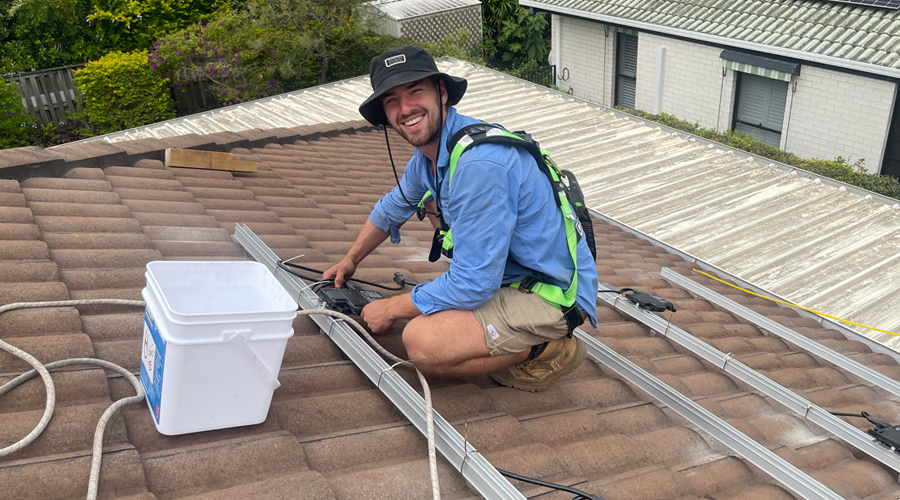HOME BATTERY SUBSIDY
Interested in learning more about the home battery subsidy? We’re ready to support homes in our area of operations. Learn more about the subsidy here.
In this article, we examine the main reasons behind Electrification – a movement to change the way we collect and use energy. Electrification is driven by a variety of reasons. Today, we take a look at environmental concerns, energy independence, energy efficiency, technological innovation, economical benefits, and health benefits. Let’s check it out!
What is Electrification?
Electrification is the process of using clean, renewable electricity to power electrical appliances, machines and transportation. Electrification is a move away from fossil fuelled power sources. Read more about Electrification here.
Environmental Reasons
Australia has a goal to reach Net Zero greenhouse gas emissions by 2050. [SRC: dcceew.gov.au] The goal to reduce greenhouse gas emissions comes from the relationship between greenhouse gases and global warming. [SRC: bom.gov.au]

As greenhouse gases increase in the atmosphere, they have the effect of trapping heat which causes the earth to warm up. About 90 per cent of the world’s carbon emissions comes from the burning of fossil fuels – mainly for electricity, heat and transport. [SRC: csiro.au]
In the context of the environment, Electrification aims to replace fossil-fuelled energy with energy sourced from clean, renewable energy, towards the goal of reducing greenhouse gas emissions and the contribution that they make to global warming. This process is described at rewiringaustralia.org.

Energy Independence
Another important goal of Electrification is energy independence – becoming less reliant on the variables that bring electricity to your door: electrical providers, the global energy situation and energy price changes. As long as the sun is shining, with rooftop solar in place, a home can generate and (with a battery) store energy independently of changes that might otherwise affect power supply or pricing.
Energy Efficiency
Optimising energy use is another objective of Electrification. Towards this goal, Electrification involves processes of measuring and monitoring energy usage in order to determine the best way forward. Armed with this evidence, consumers can make small but significant improvements in the amount of energy they use and the associated costs for their energy. By minimising energy use and maximising outcomes, greater efficiency can be attained which on a large scale improves the overall energy usage footprint.
Technological Innovation
Energy collection and usage technology is undergoing a rapid evolution. While solar has been around for decades, new solar innovations are producing different and better ways of capturing and integrating solar energy into homes and businesses. Most importantly, prices are always improving, especially on technology such as batteries which are essential for an independent energy solution.
Economical Reasons
Energy is critical for all Australian households, and in the long term, there is always a strong imperative to utilise processes which make sense financially. Electrification involves initial investment and a changed approach, towards the goal of achieving better outcomes financially over the longer term.
Health Reasons
The health reasons for the Electrification switch are mainly in relation to atmospheric changes. There is the primary reason to reduce greenhouse gas emissions and global warming. There is also the matter of air quality. For example, with EVs replacing internal combustion engines on the roads, vehicle emissions will be reduced. Furthermore, by taking gas out of homes for cooking, health and emissions risks are reduced. [SRC: abc.net.au]
Why it Matters What We Do at Home
In our day-to-day lives, the non-renewable energy sources we use produce a large amount (42%) of Australian greenhouse gases. [SRC: Rewiring Australia ] These types of machines include: petrol cars, gas heaters, gas hot water and gas stoves, and fossil-fuel power plants supplying network electricity. The type of energy we use, and the machines we use, affect our carbon footprint. Converting these fossil-fuelled machines to electrical versions, and powering them from renewable energy sources is the primary goal of Electrification.
Learn more about how to make Electrification happen on this page.
More Information
Moving into the Future
The shift to a net-zero emissions future will require a large technological shift in Australia. We are here to support this shift with energy solutions for homes and businesses in and around Noosa on the Sunshine Coast. Contact our team to discuss an Electrification solution for your home or business today.
